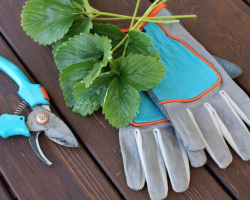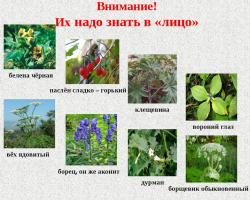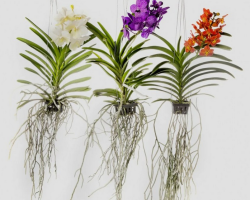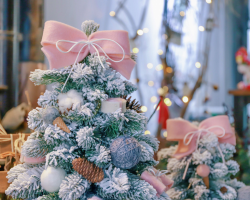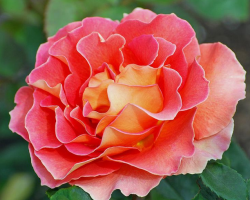In the past few years, gardeners prefer a monochrome design of the site, because it looks much more aesthetic. If you want to decorate the garden beautifully, plant blue flowers.
Content
- The best blue flowers for the garden: characteristics and description
- African Lilia
- Ageratum
- Aconite
- Allium
- Anemona
- Aster
- Anagallis
- Borago
- Barvinok
- Brunner
- cornflower
- Veronika is oak
- Viola
- Heliotrope
- Hyacinth
- Gentian
- Hydrangea
- Globular
- Delphinium
- Mortgage
- Iris
- Cariopteris
- Kermek
- Bell
- Crocus
- Lavender
- Linen
- Lobelia
- Meconopsis
- Mordovian
- Stepproof
- Nemophil of mencis
- Pericalallis
- Creeping living
- Petunia
- Liver
- Pull
- Baulus
- Nigella
- Lead
- Feverweed
- Cyanosis
- Scabious
- Phlox
- Hionodox Lucilia
- Cianotus
- Ceratostigma Wilmotta
- Erigeron
- Blue and blue flowers for the garden: reviews
- Video: A selection of blue colors for the garden
More information about the best varieties of blue colors for the garden will be described in this article.
The best blue flowers for the garden: characteristics and description
African Lilia
- This flower is still called Agapantus. Plants belong to the herbaceous type, and are covered with saturated blue flowers. They have inflorescences in the form of umbrellas. About 150 inflorescences can form on each peduncle.
- Flowering is short -lived, only 1 month. The plant begins to bloom in early summer. It is better to plant in well -lit areas. In the winter, African lily needs to be dug up, transplanted into containers, and entered into the room.

Ageratum
- The bushes are covered with saturated green leaves, which have gear edges. Inflorescences are characterized by various shades. Flowers are blue, blue, powdery, purple and even white. For this reason, Ageratum is an ideal option for the garden.
- The bushes are low, only 20-30 cm. The flowers are compact, collected in spherical and umbrella inflorescences. Culture begins to bloom in June. Flowering lasts until frost. Propagation is carried out by cuttings or sowing seeds.

Aconite
- If you look at the flowers of this plant, you can replace that they have the shape of a helmet. Admire this flower only at a distance, because it refers to toxic cultures.
- Flowering lasts from mid -summer until the beginning of autumn. It is characterized by excellent frost resistance indicators.

Allium
- This plant is still called "decorative onions." The leaves are located at the roots, and the inflorescences have a spherical shape. The peduncles are high. The height of the bushes can vary from 30 cm to 1.4 m. It all depends on the selected variety. Culture tolerates frosts well, however, prefers sunny areas.
- Propagation is carried out by seeds or bulbs. Allium can give Samosev. The blue flower for the garden begins in the second year after landing in a permanent place.

Anemona
- This plant is also called the "coroneters". This is a tubercle plant. Part of the bush that is underground consists of small tubers. They need to be dug up for the winter, and transferred to the room.
- Culture begins to bloom in late spring. Planting must be carried out in well -lit areas or in the shade. The soil should be well moistened and nourished. Therefore, before planting, it is advisable to make humus.

Aster
- This culture, depending on the variety, can have a different shape of the bush and flowers. Inflorescences may also differ. There are varieties with low, high and medium height bushes.
- The main stem is straight, durable. Propagation is carried out by seeds, the germination of which remains for several years. In order for the blue flower to bloom early, you need to sow the seeds in the greenhouse in March.

Anagallis
- This culture is considered field. Initially, it was not popular among gardeners. After the breeders deduced several other varieties that are characterized by rich blue flowers. The bushes evenly and tightly cover the surface of the soil. Plant height does not exceed 20 cm.
- It is not recommended to waterlog Anagallis, because this can provoke rot. Propagation is carried out by seeds. They need to be planted in mid -spring immediately in a permanent place. Flowering will be bright and plentiful if the plant is planted on the bright sun.

Borago
- The people are called “cucumber grass”. Its peculiarity is that it can be eaten. The flowers have a rich blue hue. Their form is star -shaped.
- Planting should be carried out in well -moistened soil. Borago prefers to grow in partial shade. Flowering lasts from the beginning of summer until the beginning of autumn.

Barvinok
- This plant belongs to evergreen. It begins to bloom in April. Suitable for planting in shady gardens or on the slopes of stones. The leaves are quite dense. The flowers are large. The height of the stems reaches 10 cm.
- Barvinok belongs to unpretentious cultures. You can plant, both in the shade and in sunny areas.

Brunner
- Perennial culture, which is characterized by large leaves located in the basal part. The flowers have a bluish-blue tint. Inflorescences are not durable.
- Propagation is carried out by seeds or dividing the roots. The procedure is carried out in spring or autumn. Culture needs good moisture. It prefers sunny areas, however, it can grow in partial shade.

cornflower
- Visually, it may seem that the cornfield is very fragile. However, it is very persistent, therefore it is often found in mountainous areas. This is the best option if you arrange a rockery or a slave in the garden.
- Culture begins to bloom in May. The flowers have a rather large diameter, so they immediately attract attention.

Veronika is oak
- If you want the garden to be filled with beauty and grace, plant Veronica on the site. This flower is characterized by blue-blue flowers.
- It is unpretentious in care, and can also grow in any areas. Under the sun's rays, bright flowers look even more aesthetic.

Viola
- The people are called “Anyutin's Eyes”. A grassy plant has a small height. The bushes are compact, not more than 30 cm high. The leaf plates have a rich green tint.
- On each flower there is 5 petals. In the section, the flowers reach 4-6 cm, depending on the variety. If you plant gigantic varieties, then they will give flowers with a diameter of about 10 cm. Their petals will have wavy edges. Propagation is carried out by seeds.

Heliotrope
- This plant is characterized by peduncles with blue-violet colors.
- They are quite compact, and create inflorescences in the shape of a flower. The peculiarity of this plant is that the flowers are directed towards the sun.

Hyacinth
- In early spring, you can notice that tubes with sharp ends appear from the ground. After them, large and dense inflorescences appear, consisting of a large number of flowers.
- Each inflorescence can have about 30 flowers. They have a tubular, funnel -shaped and bell shape. Blue flowers for the garden are characterized by a pleasant aroma.

Gentian
- If you prefer plants with bright blue flowers, be sure to plant a spring bitterness on the site. Several varieties of this type are included in the Red Book. Before proceeding with landing, make sure that you do not plan to plant rare varieties.
- Flowering of culture is observed from the end of spring to the first frost. It looks beautiful along the curb or in the climynaria.

Hydrangea
- If you plant in the garden gardenia, you can observe how the flowers change their shade from saturated pink to bright blue. You can independently control the color change, and you need to start this since spring. After blooming flowers, it will be difficult to correct the situation.
- Culture begins to bloom at the end of summer. In order for the petals to be blue, you need to create an acidic environment. To do this, water alkaline soil with a solution of iron salts.

Globular
- it perennial Grassing culture. Leaf plates are long. They gather in dense and voluminous basal sockets. The height of the stem varies from 5 cm to 30 cm.
- The disadvantage of the globular is that the flowers have no aroma. However, for people with allergies, this will be the best option.

Delphinium
- This plant is still called "Shpidnik" or "Libra -Kost". The planting of culture should be carried out in light soil to avoid stagnation of water.
- The flowers are compact and have a rich blue hue. They will be the perfect decoration for your garden.

Mortgage
- This plant has a curly structure, and grows rapidly. The height of the bushes reaches several meters. The leaf plates are pointed, and have a heart -shaped shape. The flowers are represented in the shape of a funnel. Their diameter reaches 5 cm. When it is dark or cloudy weather on the street, the flowers will be closed.
- Propagation is carried out by seeds. They can be planted immediately in open ground. It is better to land in well -lit areas. Beautifully a mortgage will fit into the design of the site if you plan to landscapes the gazebos.

Iris
- This culture is still called "iris". At first glance, she can remind the orchid. If planting was carried out in the middle lane of the country, then flowering can be seen in May. Culture blooms until the end of June. Leaf plates have the shape of a sword. They are quite dense, with a dark green color.
- The flowers consist of 6 petalsthat are located in several circles. The petals that are outside are bent down. The upper ones rise up and close in the center. This gives the flowers of unusualness.

Cariopteris
- This plant is popularly called "Nutrinch". The bushes are low. They have straight branches and blue flowers. The rich aroma of inflorescences constantly attracts bees. Flowering occurs in the same year when you plant a culture. Visually, the inflorescences resemble a peacock tail.
- In the winter, cariopteris needs to be covered, because it is unstable to frosts. The culture is characterized by strong self -sowing, so you do not have to plant bushes yourself.

Kermek
- The flower is called "Statitsa". The plant has attractive appearanceTherefore, it will beautifully decorate the flowerbed. Can be used to create bouquets.
- The stems have strong pubescence. Their height reaches 0.8 m. The flowers have a rich blue hue, however, varieties with other tones are found.

Bell
- Flowering of these colors lasts from 2 weeks to 3 months.
- They prefer to grow in areas that are well lit by the sun. However, they are often planted in partial shade, and this does not spoil the quality of flowering.

Crocus
- This culture is still called "Safran." The height of the bushes does not exceed 10 cm.
- The flowers have the shape of a glass, and look beautiful in climber.

Lavender
- This flower is known not only with a bright blue tint, but also a pleasant aromato which the whole garden will be filled. If you live in a region with an unstable climate, you will have to take care of high -quality shelter.
- Lavender is considered a heat -loving plant.

Linen
- This plant is often used in the production of natural materials. In addition, flax can be planted as a decoration of the site. The flowers can have a different shade (red, purple and yellow). However, the most popular are varieties with blue inflorescences.
- Propagation of culture is carried out by seeds. It needs to be planted in well -lit areas.

Lobelia
- If you prefer carpet compositions In the garden, plant lobelia. It will be a great option for small borders and jewelry of areas with stones. The culture of many years, however, most gardeners grow it as an annual.
- Weak stems can reach a height of 10-15 cm. Flowering begins in June, and continues until the first frosts. Propagate culture with seeds. They are planted in a greenhouse at the end of winter. Planting seedlings in a permanent place is carried out in May.

Meconopsis
- The people are called "Himalayan poppy." This plant is quite whimsical in care, so only experienced gardeners are engaged in its breeding. It is important to protect the meconopsis from dry air with plentiful irrigation.
- Flowering is observed from June to the end of summer. However, it is important to delete the flowers that were tied in time.

Mordovian
- This culture is characterized by an unusual appearance. The flowers are single, painted in a bright blue tone. Right stems reach a height of 1.7 m. Visually, it may seem that the stem is a hedgehog with needles.
- Culture blooms from July to August. Prefers well -lit areas, and can tolerate drought.

Stepproof
- Perennial bushes are low, with small flowers of blue.
- Culture blooms in spring and summer. The forget -me -not, next to the lakes in the garden, will look beautiful.

Nemophil of mencis
- This culture is unpretentious in leaving, so growing it will not be difficult. It is enough to regularly water the bushes. When the nonsense begins to bloom, the garden turns into a carpet of heavenly blue color.
- To shade the tone, you can plant a non -meter next to coniferous crops or reservoirs.

Pericalallis
- This plant is popularly called "cineraria." Annual bushes. Flowers can have various shades, and visually resemble margaritians. The flowers have the shape of baskets, and will be in an original way to decorate the paths and borders.
- The plant prefers to grow in well -lit and warm areas, however, direct sunlight should be avoided. You can plant a flower in pots to decorate the summer terrace.

Creeping living
- This plant is characterized frost resistance and resistance to drought. You can plant it on all types of soil. The peculiarity of this culture is that the living is growing rapidly, filling the propelled rods available on the site.
- The flowering of the living begins in late spring, and lasts until June. Despite the fact that inflorescences last a few weeks on the bushes, they will harmoniously decorate your site.

Petunia
- Often this culture is grown as an annual. There is a wide variety that may differ in shades. Most often, varieties with blue flowers are found in the garden. They are planted to decorate flower beds and borders.
- Plant height can reach half a meter. The stems creep on the surface of the soil. The flowers have the shape of a funnel. Flowering is plentiful and prolonged. Propagation is carried out seeds. They can be sown in a greenhouse or immediately in a permanent place.

Liver
- The bushes are winter -hardy, and have dense leaf plates that are assembled in a bundle. The height of the peduncles reaches 10 cm.
- Planting is carried out in clay soil, which is pre -fed humus. It should also be provided high -quality watering.

Pull
- This flower has another name - Scylla. Flowering begins in the spring, in early April. It lasts about 2-3 weeks.
- It is preferable to land in light and nutritious soil. The plant does not need special lighting, as well as unpretentious care.

Baulus
- At first glance, it may seem that the plant resembles an insight. The only difference is that the blue-blue flowers of the umbilical cord are somewhat larger. Culture begins to bloom in May. Literally a few weeks later, the soil surface will cover the carpets in a azure shade.
- In June, shoots are formed on the bushes, which are laid on the surface of the soil. That is why the plant is called "creeping forget -me -not." There is resistance to frost and drought. Also, culture is resistant to diseases and parasites.

Nigella
- This plant has another name - "Damasian chernushka." Visually, seed baskets resemble poppy seeds. Seeds of this culture are called caminide.
- Nigella grows on well -lit areas where nutritional soil. It should be monitored by the level of humidity, because Nigella does not tolerate waterlogging. Tainted flowers, pale blue.

Lead
- This plant has shape shrub. Liana has a saturated green tint year -round. You will have to tie the shoots regularly.
- The flowers of a pale blue shade bloom throughout the summer. It is not recommended to leave bushes in the soil for the winter, because They may not survive frosts.

Feverweed
- The height of a perennial plant reaches 100 cm. The name “Blue Thorn” is very often found. The peculiarity of this culture is that not only inflorescences are painted in blue, but the whole bush.
- Flowering begins in early summer. Quite often, the blue head is used in folk medicine.

Cyanosis
- The height of the bushes reaches 0.7 m. The leaves are cirrus, dissected. The flowers are collected in the apical inflorescences.
- Flowering begins in early summer. You can propagate culture dividing the root part or seeds. It is necessary to plant on nutrient soils, which are pre -fed with leaf humus.

Scabious
- The height of plants reaches 0.5-0.8 m. The leaf plates are oblong. They gather in a socket formed in the basal part of the bush.
- Flowering begins in the middle of summer. It continues until the first frost. It prefers to grow on well -nourished soils, so you first need to nourish it with humus.
- It is best to plant in well -lit areas. Propagation is carried out by seeds and dividing the root system.

Phlox
- This culture prefers to grow in well -lit areas. Most gardeners plant phlox on rocky slides. The height of the bushes reaches 0.3 m. The stems are branched.
- Flox begins to bloom in late spring or early summer. Lilac-blue flowers gather in inflorescences that have the shape of a shield.

Hionodox Lucilia
- This culture is slightly reminiscent of splashes. However, it is important to note that these plants have small differences among themselves. The flowers have the shape of a sprocket, while the splashes are characterized by bell inflorescences.
- Hionodox flowering begins In early spring. It is preferable to land in well -lit areas. If the bushes are planted in partial shade, then flowering will come a little later. The culture of no more than 30 days blooms.

Cianotus
- This flower is popularly called red -haired. It is important to note that the root system has a red tint, and the flowers are blue.
- Abundant flowering is observed in late spring. A few weeks before the upcoming frosts, you need to cover the culture or dig it out, and transferred it to the room.

Ceratostigma Wilmotta
- The shrubs are perennial, up to 1 m high. The culture blooms at the end of summer, and continues to do this until mid -autumn.
- When autumn occurs, leaf plates acquire a reddish tint. Therefore, the flowers of a bright blue shade will look even more impressive. Planting a culture is necessary in well -lit areas, with well -drained soil.

Erigeron
- The height of the bushes varies from 50 cm to 80 cm. Leaf plates have a lanceolate shape. They gather in a socket, which is located at the basal part of the plant. The flowers are thyroid, and begin to bloom in the middle or at the end of summer.
- Erigeron is undemanding to the soil and to care. However, it blooms best in well -lit areas. Propagation is carried out by division of the bush or seeds. The plant begins to bloom on the second after planting.
As you can see, there are a huge number of plants with bright blue flowers that will help you transform the site. You can plant only one type, or combine several with each other. It all depends on the design of the garden and your own preferences.
Blue and blue flowers for the garden: reviews
- Milana, 36 years old: Blue is my favorite color. Many coniferous crops grow in the garden, with which blue flowers look very harmonious. I love Nigella for her terry bright flowers. They immediately cheer me up.
- Suzanne, 26 years old: When I came to my parents, and I saw my mother’s garden, beauty struck me. I used to believe that only combinations of several shades look beautiful. As it turned out, a monochrome blue garden is an extraordinary beauty.
- Lydia, 57 years old: My favorite flower is barvinok. Love for it is explained not only by unpretentiousness in care, but also by the beauty of inflorescences. When the grandchildren come, we love to weave wreaths from Barvinka. It turns out a rather bright and aesthetic decoration.
We will also tell:
- Gloxinia homemade flower
- What the colors of tulips in a bouquet in the language of flowers symbolize
- What flowers are longer in the bouquet and do not wither
- Pestle and stamens - the main parts of the flower
- Why orchids do not bloom


